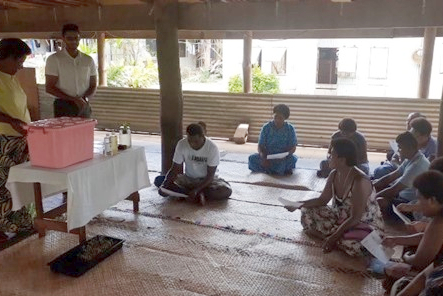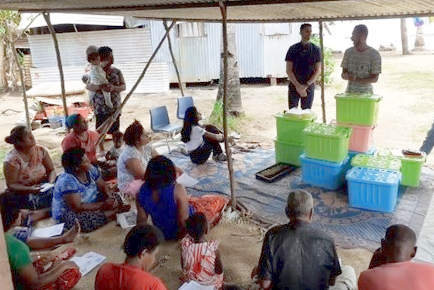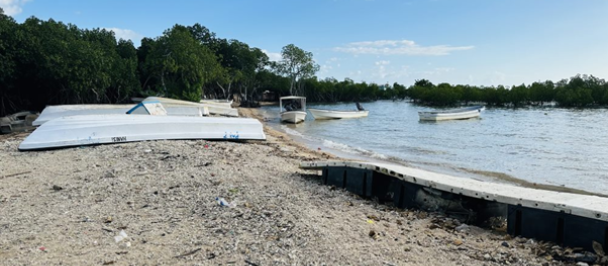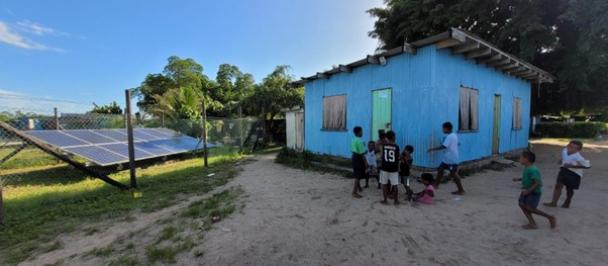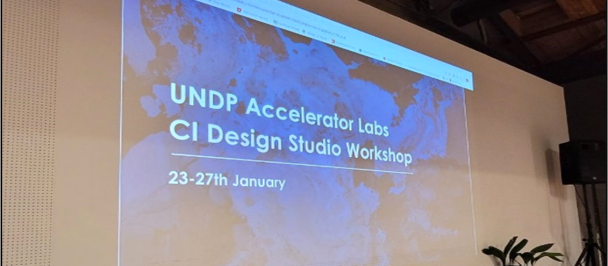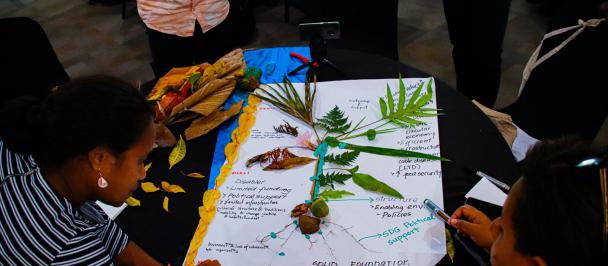This blog post is the third part of a four-blog series that shares the UNDP Accelerator Lab-Pacific learning cycle journeys in the food security space.
The Positive Deviance (PD) concept has attracted a lot of attention in the innovation field in the past decade. The PD concept is built on the premise that "in every community or organization, there are a few individuals who have found uncommon practices and behaviours that enable them to achieve better solutions to problems than their neighbours who face the same challenges and barriers, while having access to the same resources and facing similar or worse challenge". PD is an asset-based, community-driven approach to behaviour change that has successfully been applied to address many socio-economic, environmental and health problems. The approach involves finding individuals who have solved a problem and shared their unique solutions to others.
Following on my previous blog, I will now build on how I managed to sponge on the ideas of our positive deviant hydroponic farmer of Smart Farms Fiji, albeit in a participatory action research format with other stakeholders, and dispatched the ideas generated to five informal settlements, to assist households counter the issues surrounding food accessibility, availability, and affordability.
Workshop at Korociri Informal Settlement, Nadi. (Photo: UNDP/Mohseen Dean)
Workshop at Taiperia Informal Settlement, Lautoka. (Photo: UNDP/Mohseen Dean)
A household successful with the experiment at the Kulukulu informal settlement, Sigatoka. (Photo: UN-Habitat)
From a solution mapping and ethnography lens, the sponging of ideas related to hydroponic DWC farming from our positive deviant farmer was as important as getting the experiment design right at the first instance, hence the participatory action format.
I wanted every other actor involved in the entireness of the experiment to be fully engaged and to cross contaminate ideas at each stage of the design of the experiment. The more I involved everyone, the more collaborations emerged, and I noted an increase in sustainable behavioural and social change in the design.
The Application of Positive Deviance in the Design
In our case, the application of the PD concept generally followed the five steps of the PD methodology, as follows:
1. Scoping the problem in the food security space and determining desirable outcomes/interventions: the Accelerator Lab Pacific had engaged with various actors in the ecosystem to define these.
2. Discovering Positive Deviants: We actively searched for individuals and other social entities who were contributing towards food security in a positive way.
3. Carrying out positive deviance inquiry: We determined the underlying practices that led to positive outcomes for our positive deviant hydroponic farmer.
4. Designing interventions to enable others to access and practice new behaviours: We engaged with various actors in the ecosystem who were directly and indirectly affected by the intervention, and
5. Monitoring and evaluating the PD intervention: We did this by making maximum use of the Resilience Officers of UN-Habitat who were present in the field. They were responsible for monitoring and evaluation of the experiment at the informal settlements.
Positive deviants are atypical DWC hydroponic kit households who practice differently and more effectively than their peers.
During the closure of the experiment, I had accompanied the UN Habitat-Resilience Officers into the informal settlements to learn on the uptake and adoption of DWC hydroponic kits, in our case, from both the positive and negative deviant households. As we were in the process of closure, the country was hit by the second surge of the COVID-19 virus. Fortunately, we had already round up the Kulukulu informal settlement- the site having the highest positive impact for the uptake and adoption of the hydroponic kits.
Acknowledgement: Emily Moli, Zainab Kakal, and Rahul Ravneel Prasad of the UNDP Pacific Office in Fiji.

 Locations
Locations
